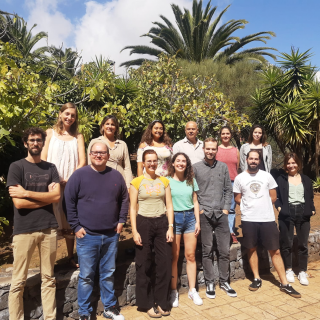Chen, Zhu; Faber, S. M.; Koo, David C.; Somerville, Rachel S.; Primack, Joel R.; Dekel, Avishai; Rodríguez-Puebla, Aldo; Guo, Yicheng; Barro, Guillermo; Kocevski, Dale D.; van der Wel, A.; Woo, Joanna; Bell, Eric F.; Fang, Jerome J.; Ferguson, Henry C.; Giavalisco, Mauro; Huertas-Company, Marc; Jiang, Fangzhou; Kassin, Susan; Lin, Lin; Liu, F. S.; Luo, Yifei; Luo, Zhijian; Pacifici, Camilla; Pandya, Viraj; Salim, Samir; Shu, Chenggang; Tacchella, Sandro; Terrazas, Bryan A.; Yesuf, Hassen M.
Bibliographical reference
The Astrophysical Journal
Advertised on:
7
2020
Journal
Citations
107
Refereed citations
97
Description
Existing models of galaxy formation have not yet explained striking correlations between structure and star formation activity in galaxies, notably the sloped and moving boundaries that divide star-forming from quenched galaxies in key structural diagrams. This paper uses these and other relations to "reverse engineer" the quenching process for central galaxies. The basic idea is that star-forming galaxies with larger radii (at a given stellar mass) have lower black hole (BH) masses due to lower central densities. Galaxies cross into the green valley when the cumulative effective energy radiated by their BH equals ∼4× their halo gas-binding energy. Because larger-radii galaxies have smaller BHs, one finds that they must evolve to higher stellar masses in order to meet this halo energy criterion, which explains the sloping boundaries. A possible cause of radii differences among star-forming galaxies is halo concentration. The evolutionary tracks of star-forming galaxies are nearly parallel to the green-valley boundaries, and it is mainly the sideways motions of these boundaries with cosmic time that cause galaxies to quench. BH scaling laws for star-forming, quenched, and green-valley galaxies are different, and most BH mass growth takes place in the green valley. Implications include the radii of star-forming galaxies are an important second parameter in shaping their BHs; BHs are connected to their halos but in different ways for star-forming, quenched, and green-valley galaxies; and the same BH-halo quenching mechanism has been in place since z ∼ 3. We conclude with a discussion of BH-galaxy coevolution and the origin and interpretation of BH scaling laws.
Related projects

Traces of Galaxy Formation: Stellar populations, Dynamics and Morphology
We are a large, diverse, and very active research group aiming to provide a comprehensive picture for the formation of galaxies in the Universe. Rooted in detailed stellar population analysis, we are constantly exploring and developing new tools and ideas to understand how galaxies came to be what we now observe.
Anna
Ferré Mateu